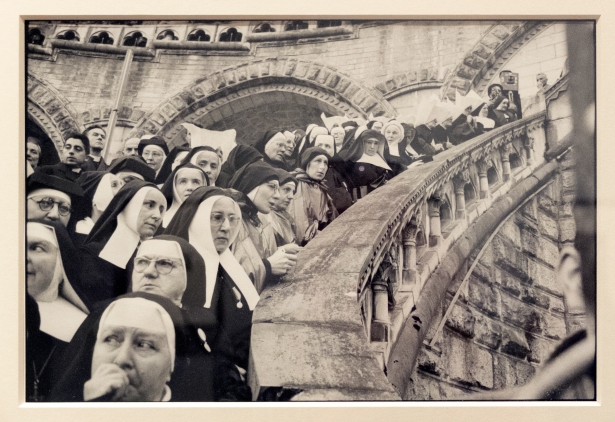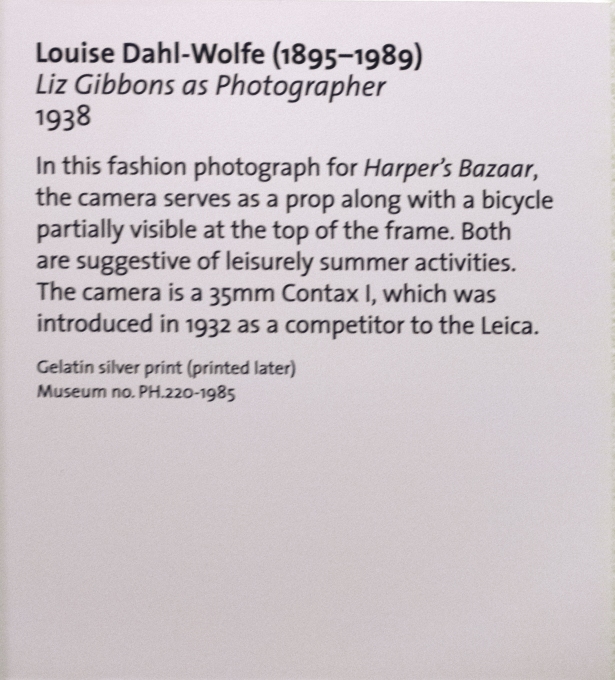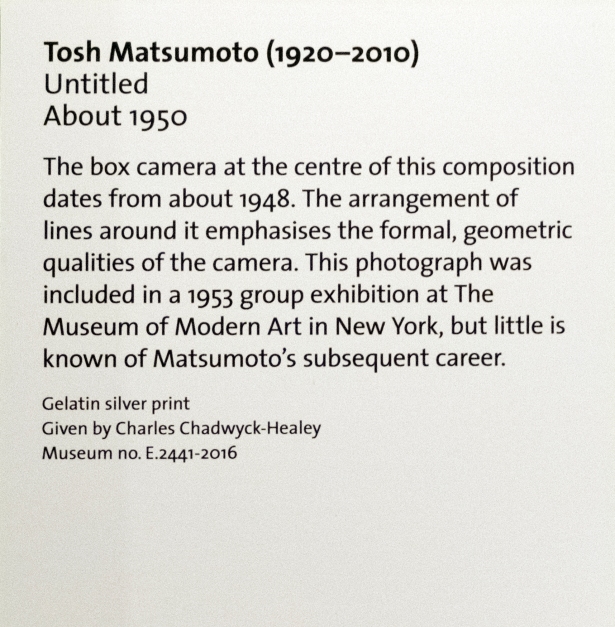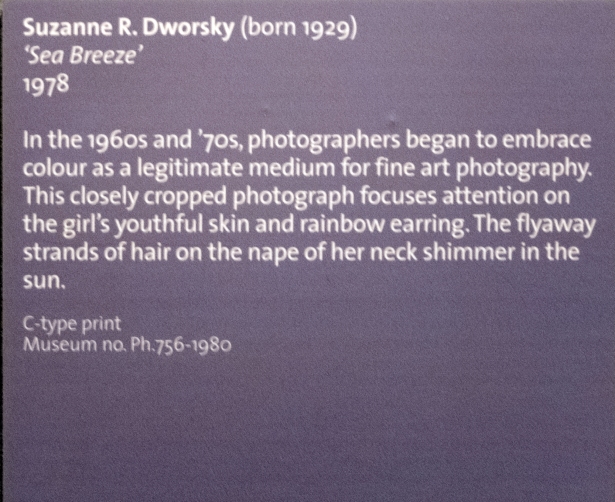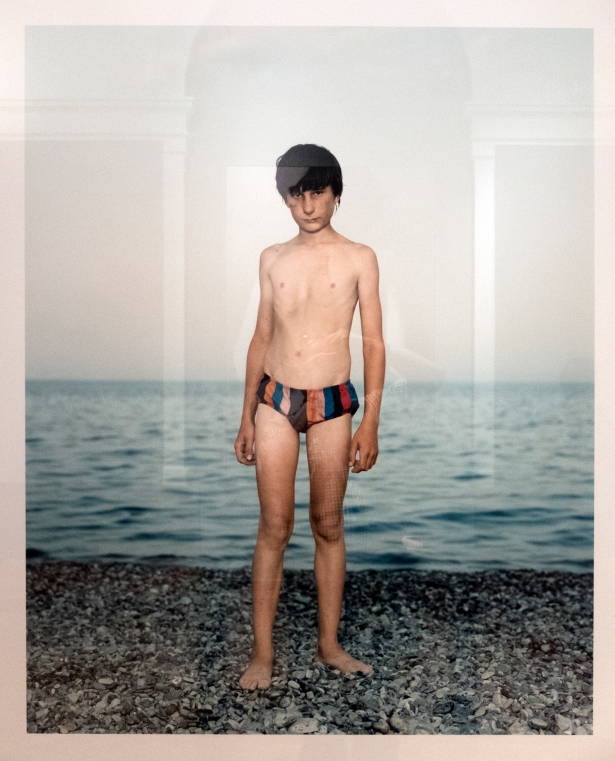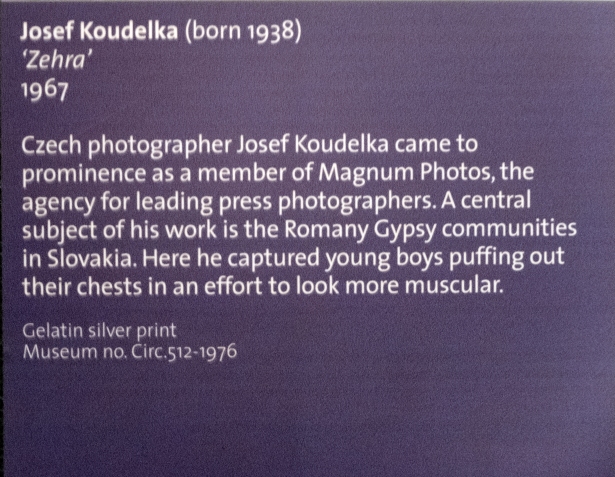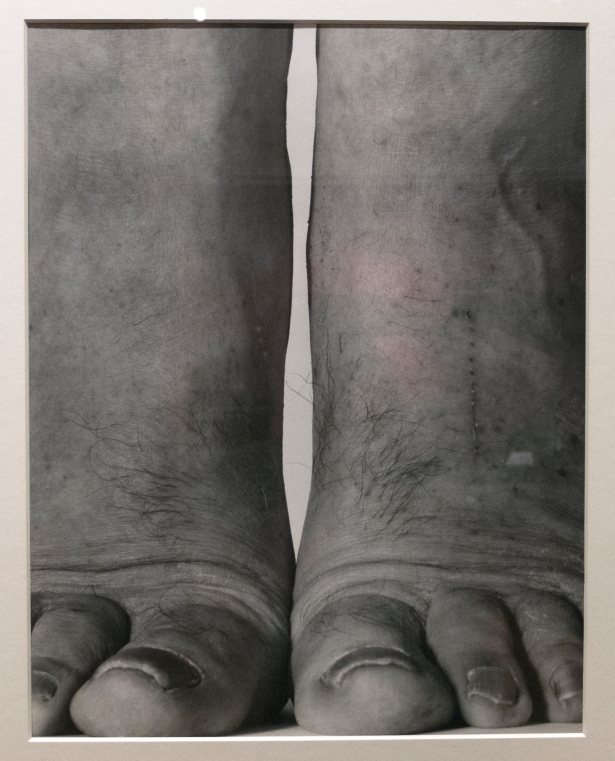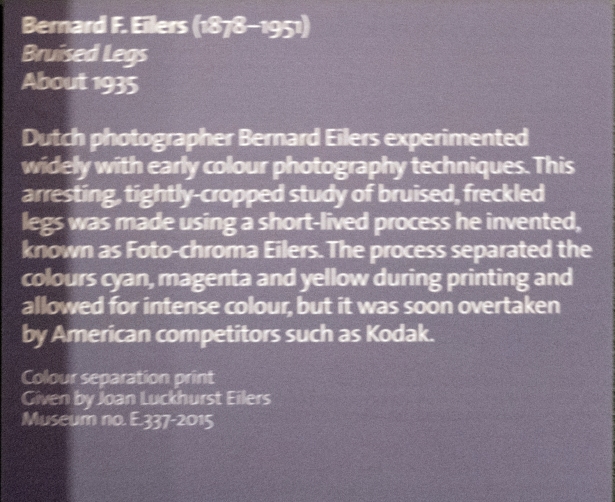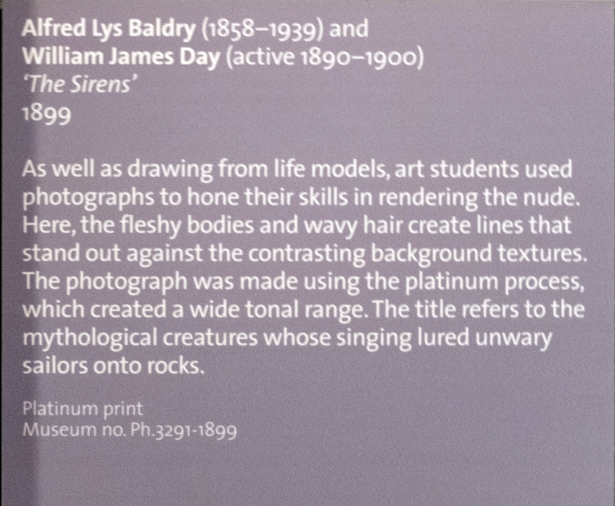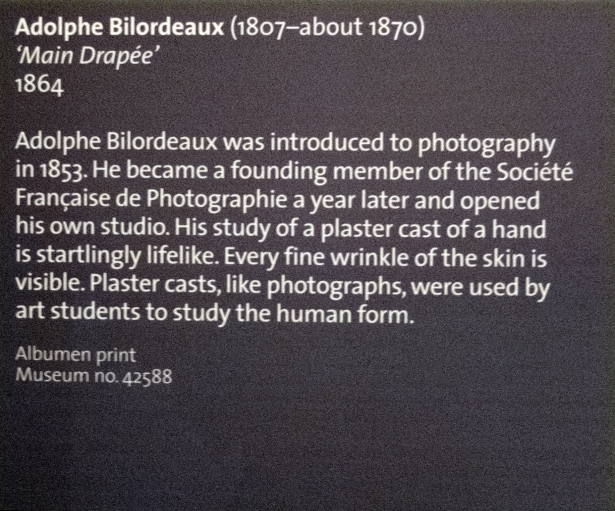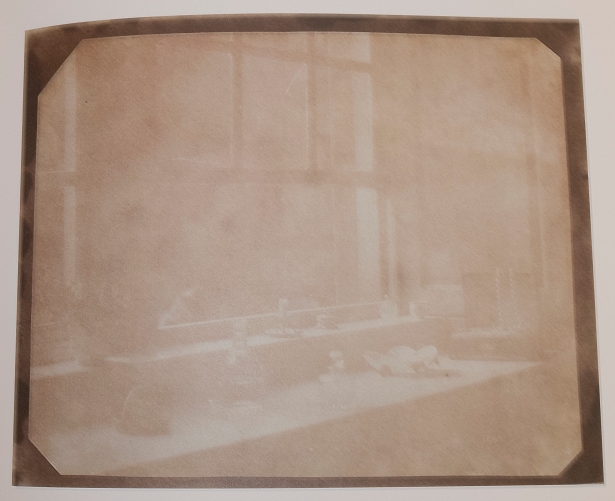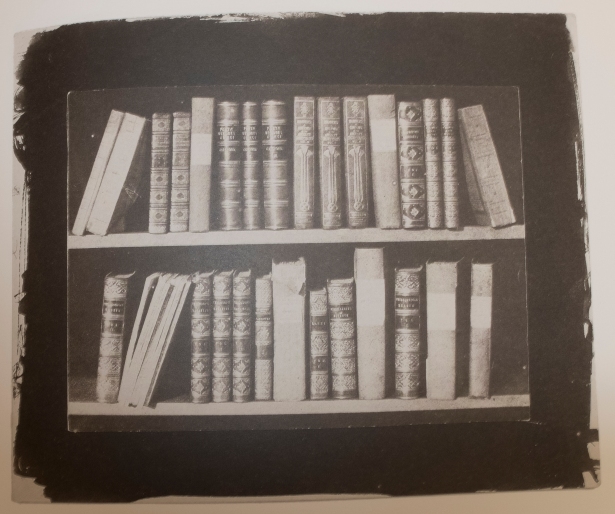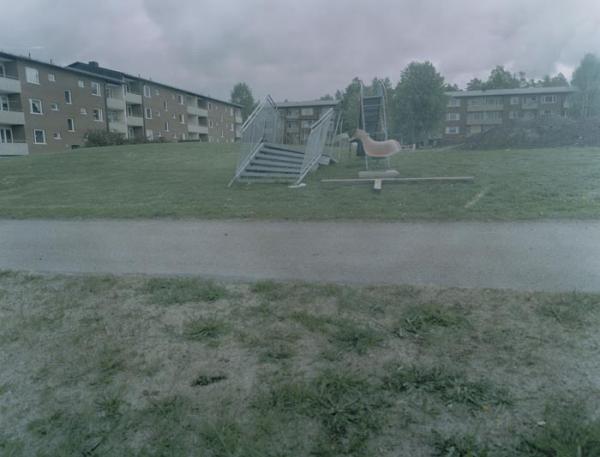I must admit a certain amount of excitement in my looking forward to this study visit to the Photographer Gallery in London to see Gregory Crewdson’s Cathedral of the Pines. Up until then I had only seen his work in books or online, and had been very impressed. For an artist credited with massive image work I felt that you had to be able to view it in person to be able to really appreciate his work.
This is the first time that The Photographers Gallery has devoted all 3 of its gallery spaces to one artist. This is I think a great statement of respect to Crewdson’s work.
After meeting up with OCA Tutor Jayne Taylor and the rest of the group in the ground floor cafe we proceeded to the galleries with the plan of meeting back at the lobby for 13:00. Most of the group started at the gallery on the 2nd floor, while I decided to start at the 5th floor and work my way down.
All the images appeared to be approximately the same size around 3′ high and 4′ wide. This I felt worked well for the size of the galleries allowing a good initial viewing distance of 7′ to 8′, allowing the viewer to drink in the images. Though the pictures have such attention to detail that one is invited and drawn closer to inspect further in an attempt to decode their meaning. On closer inspection each image has a wonderful painterly quality.
Crewdson’s masterful productions are more akin to a film production that what most people would call photography. In each image the lighting is so balanced and there is nothing in the frame that Crewdson doesn’t want there, it is almost like a single frame of a film frozen. What results is a puzzling vignette left for the viewer to decipher.
My overarching impression of the collection that everyone in it seems to be emotionally detached, a nothingness that is neither happy nor sad. The scenes have the appearance of a form of still life or memento mori, where the entire tapestry of the unfolding act (including the humans) form the elements of the still life.
There is a considerable amount of nudity or partial dress, principally in the women in the images. Whether this stems from a sense of the confidence of isolation, lack of observers, expressing uninhibited personal freedom, expressing vulnerability or just plain not caring at all. These decision seem to be left for the viewer to try and figure out. Kind of jarring at times and with no guidance, one wonders if the nudity is just gratuitous.
Interaction between the protagonists within the scenes is clearly not there, and even when physically close each seems to have their own focus of attention. These people are charged with an emotional detachment, lonely but not lonely, sad but not sad, like empty vessels. Those scenes where it hints of some kind of intimacy or sex, there seems to be no happiness, joy or excitement.
As I mentioned earlier you are drawn into the details within the image searching for clues to make sense of the tableaux. There are plenty of them, for example; a dusty handprint on the thigh of a sleeping man in ‘The Pickup Truck’, a wooden crutch under the bed of ‘Father and Son’, plus numerous visibility of prescription drugs, underwear and other hidden treasures.
Once we had all viewed the collection we decamped to a pub near Carnaby Street, the Red Lion. Here we discussed as a group (for about an hour) the exhibition and the questions it left us with. This was a very valuable part of the study visit and everyone felt able to participate.
In conclusion I want to say that I enjoyed this collection very much and thoroughly recommend it to anyone. These study visits are important as we get a chance to interact with fellow students and peers under the guidance of an OCA Tutor. I look forward to more study visits like this one in the future.












